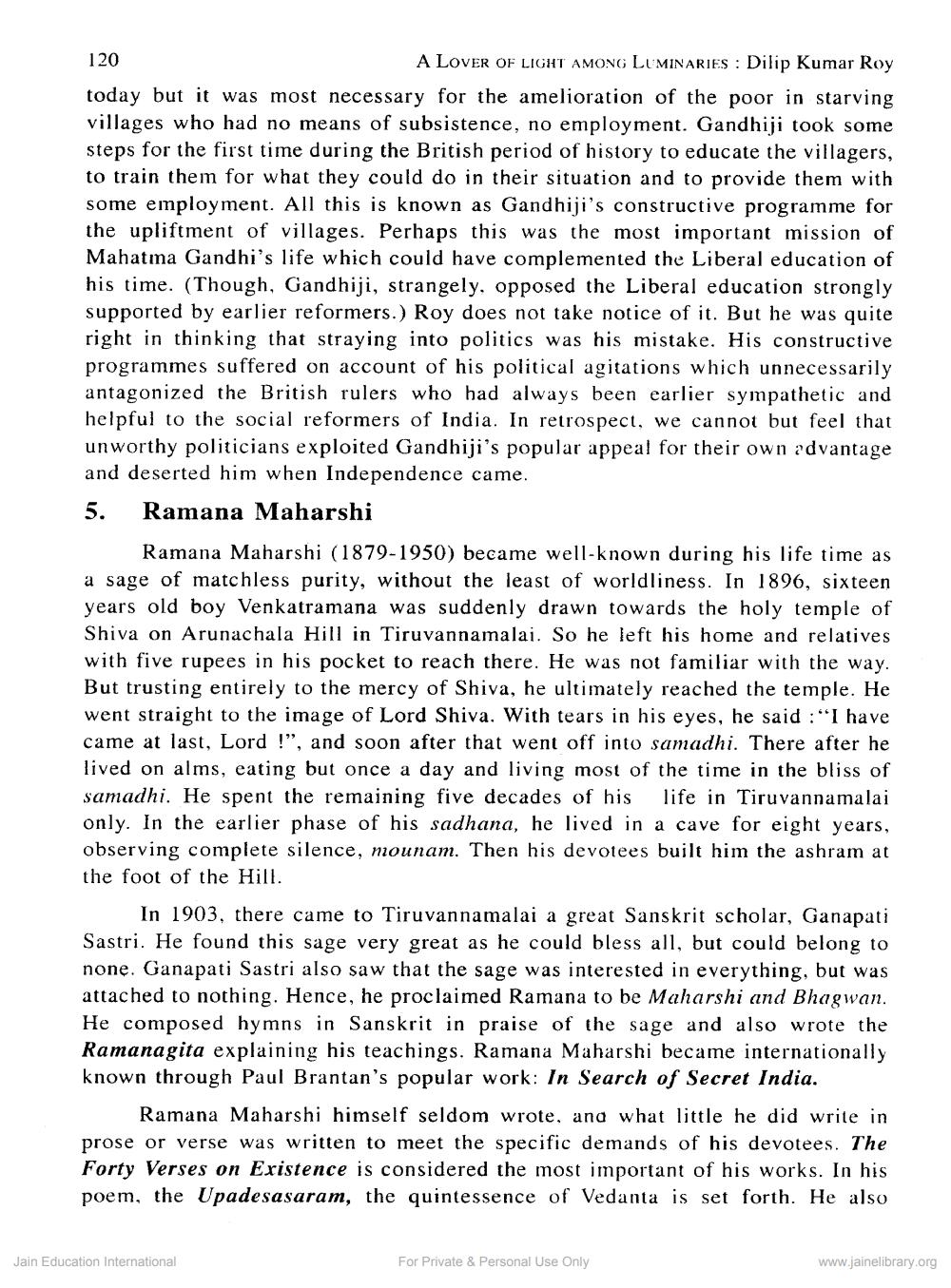________________
120
A LOVER OF LIGHT AMONG LUMINARIES : Dilip Kumar Roy today but it was most necessary for the amelioration of the poor in starving villages who had no means of subsistence, no employment. Gandhiji took some steps for the first time during the British period of history to educate the villagers, to train them for what they could do in their situation and to provide them with some employment. All this is known as Gandhiji's constructive programme for the upliftment of villages. Perhaps this was the most important mission of Mahatma Gandhi's life which could have complemented the Liberal education of his time. (Though, Gandhiji, strangely, opposed the Liberal education strongly supported by earlier reformers.) Roy does not take notice of it. But he was quite right in thinking that straying into politics was his mistake. His constructive programmes suffered on account of his political agitations which unnecessarily antagonized the British rulers who had always been earlier sympathetic and helpful to the social reformers of India. In retrospect, we cannot but feel that unworthy politicians exploited Gandhiji's popular appeal for their own advantage and deserted him when Independence came. 5. Ramana Maharshi
Ramana Maharshi (1879-1950) became well-known during his life time as a sage of matchless purity, without the least of worldliness. In 1896, sixteen years old boy Venkatramana was suddenly drawn towards the holy temple of Shiva on Arunachala Hill in Tiruvannamalai. So he left his home and relatives with five rupees in his pocket to reach there. He was not familiar with the way. But trusting entirely to the mercy of Shiva, he ultimately reached the temple. He went straight to the image of Lord Shiva. With tears in his eyes, he said: "I have came at last, Lord !”, and soon after that went off into samadhi. There after he lived on alms, eating but once a day and living most of the time in the bliss of samadhi. He spent the remaining five decades of his life in Tiruvannamalai only. In the earlier phase of his sadhana, he lived in a cave for eight years, observing complete silence, mounam. Then his devotees built him the ashram at the foot of the Hill.
In 1903, there came to Tiruvannamalai a great Sanskrit scholar, Ganapati Sastri. He found this sage very great as he could bless all, but could belong to none. Ganapati Sastri also saw that the sage was interested in everything, but was attached to nothing. Hence, he proclaimed Ramana to be Maharshi and Bhagwan. He composed hymns in Sanskrit in praise of the sage and also wrote the Ramanagita explaining his teachings. Ramana Maharshi became internationally known through Paul Brantan's popular work: In Search of Secret India.
Ramana Maharshi himself seldom wrote, and what little he did write in prose or verse was written to meet the specific demands of his devotees. The Forty Verses on Existence is considered the most important of his works. In his poem, the Upadesasaram, the quintessence of Vedanta is set forth. He also
Jain Education International
For Private & Personal Use Only
www.jainelibrary.org




